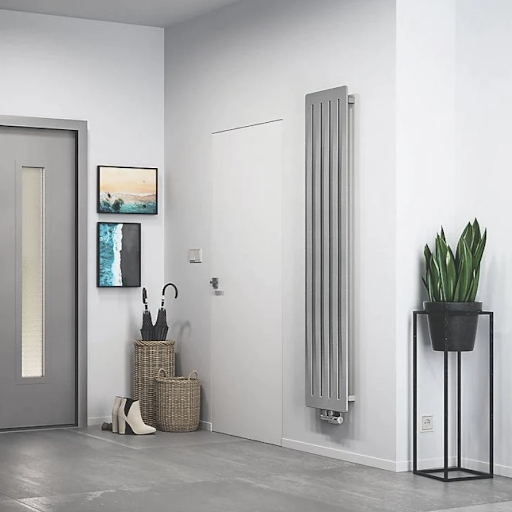As energy efficiency and environmental sustainability become more important in modern homes, choosing the right radiator can have a big impact on your carbon footprint and energy bills. But what exactly makes a radiator eco-friendly, and how can you ensure your purchase aligns with your values? This guide will look at the key features to look for when shopping for an eco-friendly radiator, meaning you make an informed and responsible choice.
Energy Efficiency
One of the most important factors in determining whether a radiator is eco-friendly is its energy efficiency. Radiators that heat up quickly and distribute warmth evenly require less energy to maintain a comfortable temperature. This not only reduces your energy consumption but also your utility bills.
Look for radiators that are designed with advanced heating technologies, such as low water content models. These require less water to operate, which means they heat up faster and use less energy. Some brands offer a wide range of efficient options, ensuring you can find a solution tailored to your needs.
Sustainable Materials
Eco-friendly radiators are often made from recyclable or sustainable materials. Aluminium, which is used by Apollo Radiators, is a popular choice due to its lightweight nature, excellent thermal conductivity, and recyclability. Steel is another durable and recyclable material commonly used in radiator construction. Opting for radiators made from these materials will ensure you’re choosing a product with a lower environmental impact.
Additionally, check whether the manufacturer prioritises sustainable production practices. Some companies are committed to reducing waste, minimising emissions, and using eco-friendly coatings that don’t release harmful chemicals into the environment.
Smart Features
Incorporating smart technology into your radiator can also enhance its eco-friendliness. Many modern radiators come equipped with programmable thermostats, letting you control the temperature and heating schedule remotely. By heating your home only when necessary, you can significantly reduce wasted energy. Some smart radiators even learn your daily routines, optimising heating patterns for maximum efficiency.
Versatility and Compatibility
An eco-friendly radiator should work seamlessly with energy-efficient heating systems. For instance, if you’re using a renewable energy source such as solar power or a heat pump, make sure your chosen radiator is compatible. Hydronic radiators, which are connected to a central heating system, are often a sustainable choice as they can be powered by renewable energy sources.
Similarly, consider the radiator’s design and placement. Vertical radiators are a space-saving and efficient option, especially in smaller rooms, as they maximise heat output without taking up too much wall space.
Longevity and Durability
Durability is another critical aspect of an eco-friendly radiator. A long-lasting radiator reduces the need for replacements, saving resources and reducing waste over time. Invest in high-quality models from trusted brands, known for their reliability and performance.
Aesthetic and Functional Design
While functionality is crucial, the aesthetic design of a radiator can also play a role in its eco-friendliness. Slimline and minimalist designs are often more energy-efficient as they focus on performance rather than bulky, outdated features. Additionally, radiators with an optimal surface area can distribute heat more effectively, reducing energy consumption.
Conclusion
When searching for an eco-friendly radiator, consider factors such as energy efficiency, sustainable materials, smart technology, and compatibility with renewable energy systems. Brands offer a variety of options that combine style, efficiency, and sustainability, making it easier to find a solution that meets your needs.
By prioritising these features, you can enjoy a warm and comfortable home while minimising your environmental impact. Choosing an eco-friendly radiator isn’t just good for the planet – it’s a smart investment for your future.

